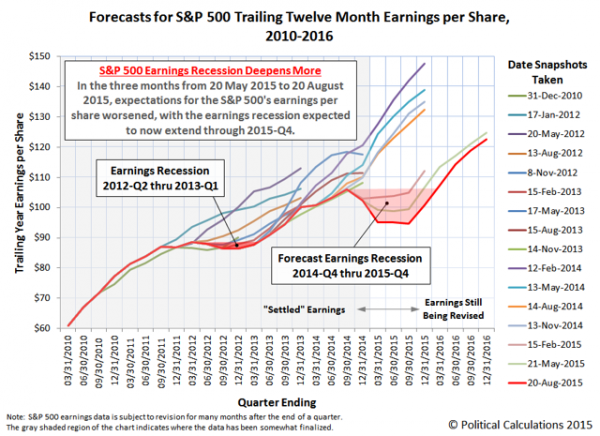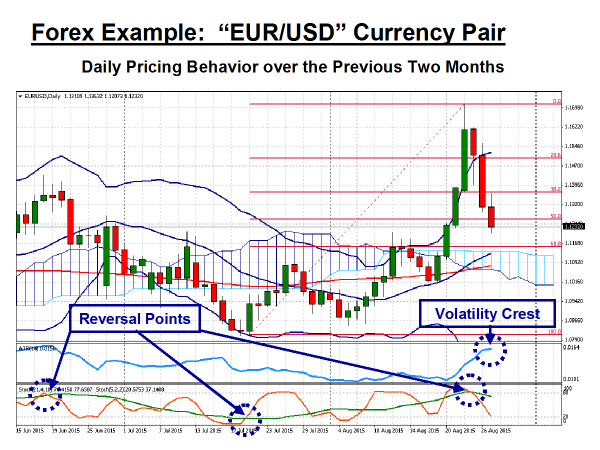Investors are jittery. Analysts are jittery. The Press is even jittery. By the looks of market volatility over the past few days, these three groups must have thought that the “Big One” had finally arrived, but, alas, the Bank of China jerked the global economic chain, resulting in a shockwave that was felt in most every market across the planet. This jerk was not the “Big One”. Markets absorbed the shock, recovered, and have moved on. Such is the level of fear that pervades the minds of the investor collective.
Should we be concerned? Yes, we need to understand that market participants are in fear that calamity will strike at any moment. Analysts estimate that there is an $11 trillion carry-trade over-hang just waiting to unwind and cause havoc in everyone’s portfolio. The question is not “If” but “When” it will happen. Market forces have been manipulated by central banks in every region such that a coiled spring of sorts exists that is tightening with each passing day that Zero-Interest Rate Policies (ZIRP) stay in effect. Stock markets have benefited, but equity values are inflated and need to deflate at some point.
When markets opened this past Monday, the S&P 500 Index took a nosedive at the bell. This fall, when combined with previous losses for the index, constituted a combined 10% fall from grace, the definition of a market correction. But, before the day was out, buyers rushed in to grab up supposed bargains, and here we are again, waiting for the highly anticipated correction to take place. What does the future hold for stocks? This week’s award for the “Best Chart” goes to the firm of Political Calculations:

This company publishes an S&P 500 earnings forecast each quarter, based on the guidance given for each entity in the index. Aside from hysteria and free money from various QE programs, earnings growth is the key variable that drives valuations of stock prices. If you accept the premise of the chart, then it predicts that an earnings’ recession, a period where earnings decline over more than two consecutive quarters, will extend into the fourth quarter of this year. Is the so-called day of reckoning on the near-term horizon? The red-shaded area does look a bit foreboding, doesn’t it?
If this was not the Big One, then why did markets behave so strangely?
Volatility was the name of the game during this quasi-corrective move, especially in the foreign exchange markets. If there is one thing that analysts and central bankers agree on, then it is that heavy turbulence in the forex world will engulf market participants when the actual balloon goes up. There are many reasons for this statement, and we will get to that discussion later, but, for the moment, there were no fundamental causes in the form of economic releases that justified this recent bout with craziness. Yes, Chinese officials have been proactive in their efforts to right their rocking economic ship, but these antics were not something new.
Consider the following economic facts:
- China’s economy is falling, hopefully, to a soft landing at 7% GDP growth;
- China’s stock market bubble has burst and values are correcting;
- The Bank of China devalued the national currency to boost demand;
- Commodities continue to flounder without increasing demand from China;
- Commodity currencies (AUD, NZD, and CAD) will weaken as a result;
- The Fed and the BoE are the only two central banks that are considering rate hikes, either this or early next year. Most others are considering cuts;
- Europe and Japan are broadening their quantitative easing efforts;
- Economic indicators in the U.S. market continue to move forward at a gradual pace, including monthly job growth figures in excess of 200,000 for the last two years, but inflation has not gotten out of control, as many predicted.
The simple truth is that these facts were known a week ago, and not one of them has changed materially. We are so used to reading about contagion in the EU that many investors have assumed that the current malaise in China will spread and cause an avalanche of problems down the road. The fact is, however, that China has been pulling back for several years, ever since the Great Recession put a damper on Western demand for their goods. What we are witnessing is a Chinese learning curve on how and when to intervene with policy changes to manage their domestic economy. To their credit, when the market slide began on Monday, the Bank of China did reduce interest rates, a move designed to calm the market environment. It appears to have worked.
This week’s market reaction may be a preview of things to come?
The nature of this week’s market behavior was not according to textbook. Many analysts were confused. Panic in the streets is supposed to cause capital to take flight to safe havens in times like these, but the US dollar weakened on most fronts. Since the brief stock market meltdown did not cause a massive shift in capital flows, one has to examine the marginal aspects of the current global investment milieu in order to make sense of what just transpired.
Marginal aspects are those that have been taken most recently on an incremental basis by global investors. These funds may be betting on a quick return at high risk, but, in a pinch, as in the commotion over the past week, investors tend to unwind those bets that have the least chance for a return worth waiting for. As you might conclude, these marginal bets were made in anticipation of the Fed raising interest rates in early September. Surveys hinted at more than a 50% chance, but the market had only factored in a 25% chance, so why not put any excess cash lying around behind the USD?
The situation still gets a little murky when trying to apply this principle to carry-trade positions. The general consensus is that both the euro and the yen have been used as the funding currency for many of these marginal trades. At the first sign of panic, these positions were the first to unwind, thereby repatriating funds back to the homeland and putting increasing demand on their respective currencies. In other words, if excess capital in Japan and Europe had been bet on the USD appreciating in early September, these positions were the first to be unwound when alerts went flying about.
Is this logic borne out in the recent “EUR/USD” pricing behavior?
The following daily chart tells the story:

Since last April, the Euro has been range bound between 1.08 and 1.15. The pricing activity, however, has resembled a downward channel with a slight downward slope, an acknowledgement that the ECB is presently printing money with its form of quantitative easing. Expanding the money supply implies a weakening currency, all according to plan to boost export trade and improve the fortunes of its most southerly member states that happen to depend on tourism and more local pursuits for economic prosperity. The sudden spike up from the central Bollinger line was a surprise to all.
The rapidity of the spike was even more puzzling. Fear in Asia would normally have driven funds into the British pound, the Swiss franc, U.S. Treasuries, or precious metals, another USD-based market sector. Whenever you see a currency pair rise this swiftly without any apparent fundamental economic reason, then you should be salivating in anticipation of a good fading run on the way down. In this regard the euro did not fail its followers. It came down like a rock, as did the pound and the yen.
What could cause such an abnormal response to fear in the streets? The prevailing answer among analysts is that many USD-based carry trades were suddenly unwound. These bets were marginal at best, offered only the smallest chance of a monetary reward, and were the easiest to sell off in order to meet margin calls elsewhere. In addition, long equity positions in Europe and Japan more than likely included currency hedges that also had to be unwound, creating additional demand for the home currency. Lastly, a few analysts point to declining petrodollars as another cause. When barrels of oil are moving off the shelf, the Saudis and others have excess dollars to invest. The fall in commodity prices has dried up this demand for USD, as well as for the euro.
Be sure to ensconce this litany of events in your brain cells for later down the road when true panic grips the market. As for now, volatility has crested. Calmness has returned, and indicators, like the Double Stochastic above, still signal when reversals have taken place. As shown in this diagram, the head fake rise was temporary by nature. It soon reversed. When a real stampede for the exit materializes, you will see countries and companies rush to recover dollar reserves to match their dollar obligations. This action will be the real stampede that creates enormous demand for U.S. Treasuries.
Concluding Remarks
When should we start to get worried? Caution is still advised. For the moment, most experts expect the Euro to continue on its downward path, perhaps, through the Kumo Cloud to 1.10 and even further to test support at 1.08. No one is speaking parity with the greenback at this juncture. It may test a few obvious Fib lines of support, but, without favorable economic data to brag about, there is no free air for the Euro balloon. Foreign exchange reserve managers have rebalanced over time, so do not expect any pent up demand from that quarter.
For the time being, expect to see a plethora of articles about a top forming in the S&P 500 Index. Most of these will point to one or two dozen indicators that scream that stocks are way overvalued, but the authors will shy away from timelines or whether we will see a 10% correction or something along the lines of a 20% fall that would signal the end to the third longest Bull market in modern times. If you are convinced that doom is in the horizon over the next year, then you might want to reconsider risk allocations in your portfolio. Advisors in this area suggest buying large-cap domestic stocks (50%), investment grade bonds (25%), and cash (25%).
If you are active in the forex market, then get ready. Your time is coming!
Risk Statement: Trading Foreign Exchange on margin carries a high level of risk and may not be suitable for all investors. The possibility exists that you could lose more than your initial deposit. The high degree of leverage can work against you as well as for you.